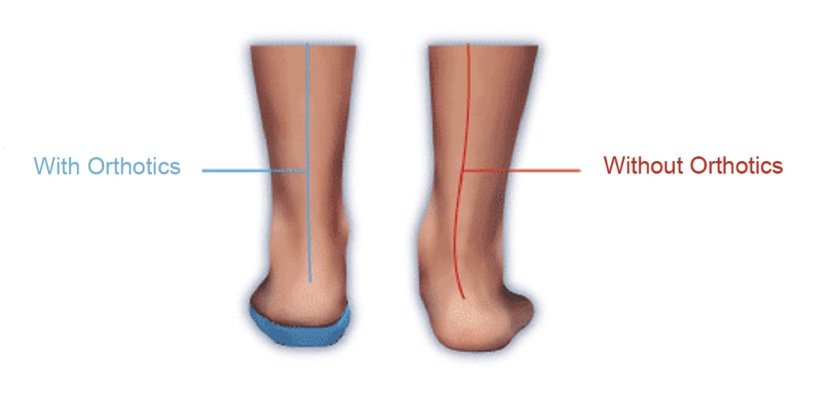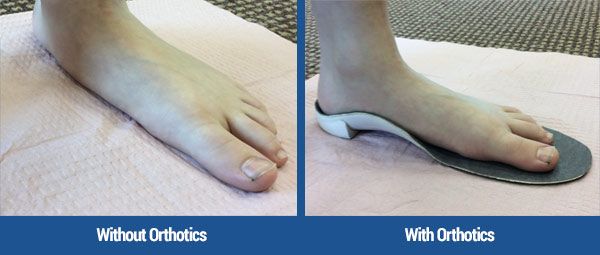Ski Boot Fitting in North America Northglenn CO
Ski Boot Fitting in North America Northglenn CO
Blog Article
Understanding Boot Layout and Fit Frederick CO
Choosing the best ski boot can significantly have an effect on your skiing experience, impacting both comfort and performance. Understanding the important components concerned in making this selection is vital for skiers of all ranges, from beginners to seasoned consultants. The proper ski boot enhances management over your skis, allowing for better maneuverability on varied terrains.
One of the primary issues in selecting a ski boot is the fit. Ski boots ought to fit snugly, but not uncomfortably tight. It’s important to strive on numerous models and brands, as every has its personal distinctive shape and sizing. A good fit will reduce movement throughout the boot, decreasing the chance of blisters and guaranteeing that your power is transmitted efficiently to your skis.
Personal Experience with Boot Fitting Golden CO
Keep in thoughts that the majority ski boots come in numerous widths. The size of the boot is solely one element of fit; the width will create a more personalised experience. Boots are sometimes categorized as narrow, medium, or wide, catering to different foot shapes. Your foot shape will largely dictate which width is finest suited to you, impacting how comfy you are feeling during your skiing sessions.
Next, the flex index should be taken into account while choosing the right ski boot. Flex refers to how stiff or delicate a boot is, with stiffer boots offering extra management and response. On the opposite hand, softer boots are extra forgiving and simpler for newbies to manage. Advanced skiers might favor stiffer fashions for optimum performance, while those new to the game might find softer choices extra affordable and comfortable.
The supposed ski style additionally performs a crucial function in your choice - Creative Solutions for Boot Fitting Problems Superior CO. Are you planning on snowboarding totally on groomed trails, or do you aspire to enterprise into backcountry skiing? Freestyle skiers typically choose softer boots, permitting for flexibility during jumps and tricks. Alpine skiers could opt for stiffer models that promote stability and responsiveness on hard-packed snow or icy situations
Basics of Ski Boot Architecture and Fit Erie CO
Another necessary facet is the boot's thermal insulation and how it retains your ft warm throughout prolonged publicity to cold. Insulation supplies differ significantly, and some boots include added know-how for heat retention. If you’re snowboarding in frigid circumstances, choosing a boot equipped for warmth can drastically enhance your enjoyment on the slopes.
When assessing the liners of the ski boot, it's sensible to understand that this part can drastically change the fit and feel of your boot. Many fashionable ski boots come with heat-moldable liners that conform to the form of your foot over time. This customization can result in enhanced comfort and improved performance, as the liner provides better support on your foot and ankle.

Buckle systems are one other component to not overlook whereas choosing ski boots. The variety of buckles affects how securely the boot suits and the way simply you'll find a way to take it on and off. Boots with extra buckles provide a extra adjustable fit and better safety. However, those with less complicated techniques may be simpler for beginners to handle. Consider which aspects matter most to you based mostly on personal choice and expertise degree.
Boot Fitting Resources for Skiers Dacono CO
Selecting the right ski boot dimension can be complicated by variations in manufacturers. Sizes can differ, so it’s advisable to consult measurement charts specific to every brand you attempt on. Understanding your foot's measurements can guide you towards a more fitting selection. This knowledge might help you keep away from choosing a boot that is either too massive or too small, both of which may detract out of your skiing experience.
It’s important to check for extra options that some boots provide, such as stroll modes or interchangeable soles. Walk modes enable for easier movement when you’re not in your skis, a fantastic boon for many who prefer to hike or transfer around the lodge. Interchangeable soles can make the boot more versatile, permitting it to adapt to different types of snowboarding or even strolling.
Try to seek the steerage of skilled retail professionals when navigating the plethora of choices out there. They can present insights and recommendations based on your snowboarding fashion, skill level, and personal preferences. Their expertise will help filter the appropriate boots that match your wants, guiding you through the nuances of fit and performance.
Boot Fitting Solutions for All Levels Lyons CO
In conclusion, the hunt for the proper ski boot combines various essential parts that require cautious consideration. Fit, flex, fashion, insulation, liners, buckles, dimension variations, and additional options all play a task in your selection. Spending time to analysis and take a glance at different models can make a considerable difference in each performance and luxury, making certain a extra gratifying day on the slopes. Prioritizing these components and in search of skilled recommendation will equip you with the necessary tools to make an informed choice, leading to improved snowboarding experiences for years to come.
- Assess your skill level; beginner skiers typically want softer flex boots, whereas superior skiers profit from stiffer choices for better management.
- Prioritize fit over model; a well-fitting boot is essential for comfort and performance, whatever the producer.
- Consider the boot’s final width, as it influences the quantity of your foot; a narrow last enhances precision for narrow feet, whereas a large final offers comfort for broader ft.
- Pay attention to flex index ratings; each boot has a novel flex rating that matches your skiing fashion and physical attributes, affecting responsiveness and comfort.
- Explore custom insoles; they can significantly enhance comfort and forestall issues similar to blisters and cold feet by providing higher arch help and weight distribution.
- Test boots in-store with acceptable ski socks; make sure the fit is comfortable but not painfully tight, allowing for slight wiggle room and correct circulation.
- Look for heat-moldable liners; these could be custom-made to the shape of your foot for enhanced comfort, particularly should you experience any pressure points.
- Consider the type of skiing you plan to do, whether or not it is alpine, backcountry, or freestyle, as each requires particular boot traits for optimal performance.
- Check for buckling systems and options like energy straps; a good closure can improve fit, cut back motion, and enhance total snowboarding efficiency.
- Don’t neglect about liner materials; different supplies provide varying ranges of warmth, moisture-wicking, and cushioning, instantly impacting your snowboarding experience.undefinedWhat dimension ski boot should I choose?
Choosing the right measurement ski boot is crucial for comfort and performance. Measure your foot size in centimeters and consult a ski boot size chart, usually a half-size smaller than your regular shoe size. Always attempt boots on with the proper ski socks for an correct fit.
How do I know if the ski boot is too tight or too loose?
Boot Fitting Innovations in the Industry Louisville CO
A well-fitted ski boot ought to feel snug however not painfully tight. Your toes should just contact the front of the boot when standing upright. When you bend your knees ahead, your toes should pull barely away from the front. A unfastened boot can lead to poor management and blisters.
What is the difference between delicate and stiff ski boots?
Diverse Ski Boot Fitting Approaches Wheat Ridge CO
Soft ski boots supply more flexibility and luxury, making them suitable for beginners or informal skiers - Common Boot Fitting Mistakes Firestone CO. Stiff boots provide higher responsiveness and control for skilled skiers on challenging terrain. It's important to choose primarily based on your ability level and snowboarding style
Should I contemplate boot width when choosing ski boots?
Yes, boot width, also referred to as "final," is important for comfort. Ski boots come in numerous widths—narrow, medium, and wide. Measure the width of your foot and evaluate each mannequin's fit to ensure comfort and scale back pressure points while skiing.
What kind of ski boot is best for my snowboarding style?
Fit Issues to Watch for in Ski Boots Brighton CO
Consider your skiing fashion: when you plan to journey groomed trails, an all-mountain boot is good. Backcountry skiers should go for lighter, extra flexible choices. Freestyle skiers benefit from gentle boots for larger maneuverability. Match the boot type to your skiing choice for optimum performance.

How essential is custom fitting for ski boots?
Fitting Challenges for Ski Boots Nederland CO
Custom fitting can considerably enhance comfort and performance. Professional boot fitters can adjust your boots to your foot shape, addressing particular pressure points and making certain a greater fit. While not essential, it’s useful, especially for many who ski frequently or have foot issues.

Is it value spending extra on higher-end ski boots?
Higher-end ski boots typically feature advanced supplies and technology, providing greater comfort, performance, and sturdiness. If you ski often, investing in a quality pair can enhance your expertise and allow you to develop better expertise. Consider your skiing frequency and elegance when deciding.
Adjustable Features for Enhanced Boot Fit Brighton CO
What features ought to I search for in a ski boot?
Look for features similar to heat-moldable liners for personalized comfort, adjustable buckles for a greater fit, and waterproof materials to maintain your feet dry. Flex rating, insulation, and weight are also important factors that should align along with your skiing needs and situations.
Boot Fitting Instructions for Beginners Golden CO
How do I keep and retailer my ski boots?
Always dry your ski boots after every use to prevent moisture buildup, which may result in odors or deterioration. Store them in a cool, dry place away from direct sunlight. Regularly verify the liners, buckles, and soles for put on and tear to ensure they proceed to be in good condition.
directory Balancing Comfort and Performance in Fit Report this page